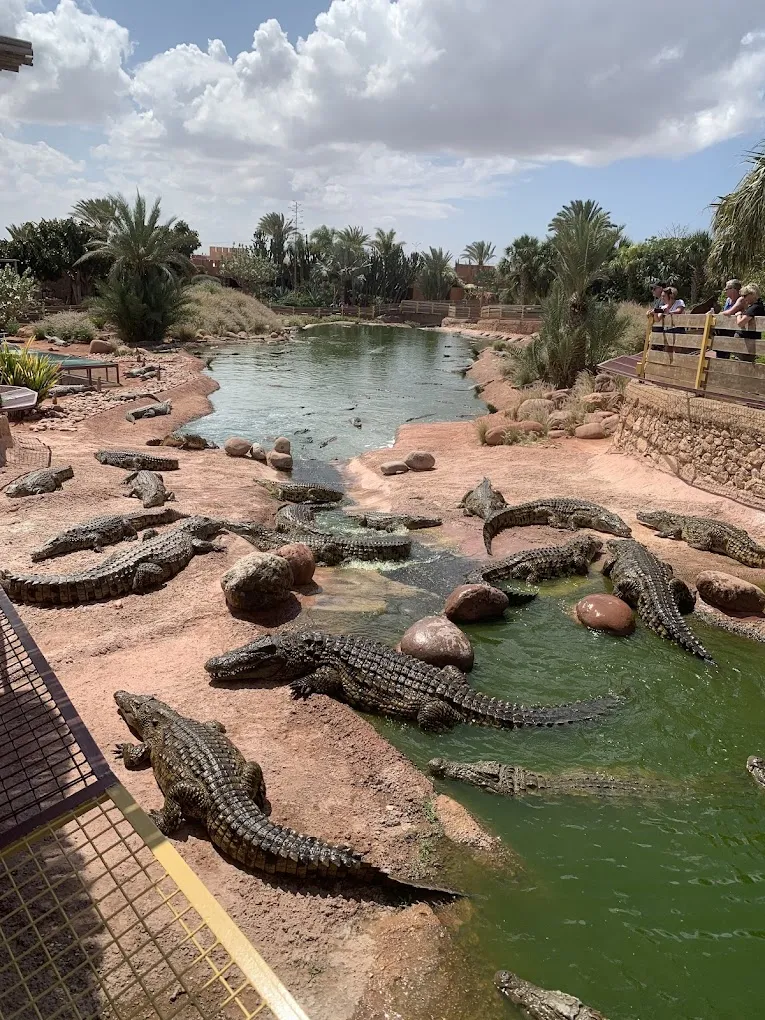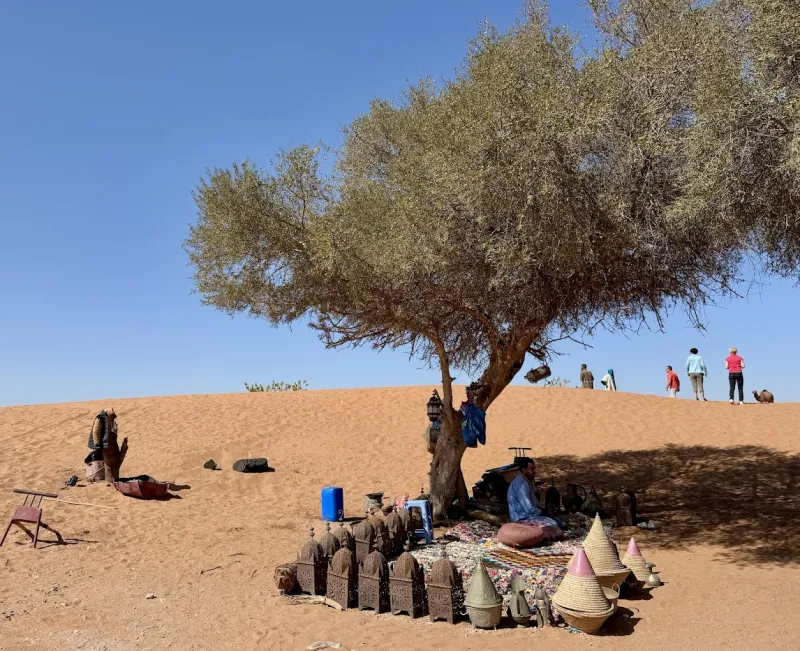Bab Marrakech: Gateway to History, Culture, and the Soul of the Medina
11 Mar 2025In the labyrinthine heart of Marrakech, where the modern world converges with centuries of tradition, the ancient city gates stand as enduring sentinels of history. Among these, Bab Marrakech holds a special place—a portal not only marking the threshold between the bustling medina and the outside world, but also symbolizing the vibrant cultural narrative of this enchanting city.
Historical Origins: The Birth of a Gateway
The Fortified City and Its Walls
Marrakech was founded in the 11th century and quickly evolved into a major center of trade, art, and politics in North Africa. As with many medieval cities, its survival depended on robust defensive structures. The city walls, constructed to ward off invaders and delineate the urban core, were punctuated by a series of gates, each serving a distinct role in the organization and defense of the medina.
Emergence of Bab Marrakech
Bab Marrakech—often simply referred to as the “Marrakech Gate”—emerged during a period when the city’s strategic layout was meticulously planned. Although some gates, like the famed Bab Agnaou, have received extensive scholarly attention, Bab Marrakech quietly developed its own narrative. This gate was designed not just as a functional entry point but as an emblem of civic pride, symbolizing the city’s openness to commerce, culture, and communal life.
A Witness to Changing Eras
Over the centuries, Bab Marrakech has witnessed the ebb and flow of history—from the flourishing of trade under the Almoravid and Almohad dynasties to the transformations brought by French colonial influences in the early 20th century. Each epoch left its mark on the gate, adding layers of meaning and subtle architectural modifications that echo the evolving identity of Marrakech.
Architectural Splendor and Design Elements
Harmonious Blend of Function and Art
Bab Marrakech exemplifies the dual purpose of Moroccan city gates: functionality paired with artistic expression. Its robust structure reflects the need for defense in turbulent times, yet every stone and arch is imbued with aesthetic detail that resonates with Islamic design principles.
Signature Features
Intricate Carvings and Geometric Patterns: Like many traditional Moroccan structures, Bab Marrakech features elaborate stucco work and intricate geometric motifs that are both decorative and symbolic. These patterns not only beautify the gateway but also invoke a sense of infinity—a visual metaphor for the continuity of life and tradition.
Sturdy Construction: Built to withstand the tests of time and conflict, the materials and construction techniques used in Bab Marrakech speak to the expertise of ancient artisans. The thick walls, massive arches, and strategic layout ensured that the medina remained secure while also guiding the flow of people and goods.
Subtle Ornamentation: While its imposing structure served a defensive purpose, Bab Marrakech was never devoid of elegance. The subtle ornamentation—ranging from carved stone details to the play of light and shadow on its surfaces—invites observers to pause and appreciate the artistry behind its creation.
The Role of Water and Light
In traditional Moroccan architecture, water and natural light play essential roles. Reflective surfaces, courtyards adjacent to city gates, and the interplay of light on carved facades contribute to an ever-changing visual experience. Bab Marrakech, with its strategic positioning and thoughtful design, captures the essence of these elements, serving as a dynamic threshold between the inner sanctum of the medina and the outer world.
Bab Marrakech and the Urban Fabric of the Medina
A Living Portal
Bab Marrakech is more than just a static monument—it is an active part of the urban landscape. It has long served as a point of convergence for residents, traders, and travelers. Historically, the gate was the scene of daily life: merchants arriving with exotic wares, locals meeting for conversation, and pilgrims setting forth on spiritual journeys.
Commerce and Connectivity
The location of Bab Marrakech was no accident. Positioned strategically along the main routes, the gate facilitated the flow of commerce into the medina. Caravan traders and local vendors would pass through its threshold, bringing with them not only goods but also ideas and cultural influences. In this way, Bab Marrakech became a symbol of connectivity—a place where distant lands met the vibrant pulse of Marrakech.
Social and Cultural Crossroads
The area surrounding Bab Marrakech has long been a melting pot of cultures and social classes. As one of the key access points into the medina, it has seen the intermingling of various traditions, languages, and customs. Over time, this has imbued the gate with a rich tapestry of stories—from whispered legends of ancient heroes to lively accounts of market days that continue to shape local lore.
Cultural Significance: More Than Just a Gate
Symbol of Identity and Resilience
Bab Marrakech embodies the spirit of Marrakech itself. It stands as a reminder of the city’s enduring resilience, its ability to adapt while remaining anchored in its traditions. For locals, the gate is a daily testament to the city’s storied past—a marker of identity that connects generations through shared heritage.
A Canvas for Artistic Expression
In recent decades, Bab Marrakech has also become a focal point for contemporary artistic expression. Local artists and photographers frequently capture its imposing form, its textures, and the way it harmonizes with the vibrant life around it. Through murals, exhibitions, and even modern installations, the gate has found new interpretations that celebrate both its history and its continued relevance in a changing urban landscape.
Festivals and Celebrations
Cultural festivities in Marrakech often extend to the ancient city gates. Bab Marrakech, with its majestic presence, serves as an ideal backdrop for traditional celebrations, music performances, and community gatherings. These events not only enliven the space but also reinforce its role as a living symbol of Marrakech’s cultural dynamism.
Bab Marrakech in the Contemporary Context
A Beacon for Tourists and Historians Alike
Today, Bab Marrakech is a cherished landmark for both residents and visitors. For tourists, it offers a tangible connection to the city’s past—a first glimpse into the mystique of the medina. For historians and scholars, it provides insights into the defensive strategies, urban planning, and aesthetic values of a bygone era.
Challenges of Preservation
Like many historical structures, Bab Marrakech faces the challenges of modernization and urban expansion. Efforts to preserve its integrity are continually balanced against the demands of a growing city. Conservation projects aim to restore and maintain the gate’s original features, ensuring that future generations can continue to appreciate its historical and architectural significance.
Integration with Modern Life
While the defensive function of city gates has long been obsolete, Bab Marrakech has seamlessly integrated into modern urban life. It stands not as a relic, but as a vibrant part of Marrakech’s daily rhythm—a place where ancient stone meets contemporary vitality. Local authorities and cultural organizations work together to ensure that while the city evolves, the heritage encapsulated in structures like Bab Marrakech is not lost.
Reflections on the Legacy of Bab Marrakech
A Symbol of Enduring Beauty
Bab Marrakech is a microcosm of what makes Marrakech extraordinary: its ability to merge history, art, and life into a single, cohesive narrative. The gate’s enduring beauty lies in its synthesis of function and form, where each carved detail tells a story of a city that has thrived through centuries of change.
Bridging Past and Present
Every time one passes through Bab Marrakech, there is a palpable sense of transition—a crossing from the external modernity of the city into the inner world of the medina, where history is alive in every stone. This liminal space, where the past meets the present, reinforces the notion that Marrakech is not merely a city frozen in time but a dynamic living entity that honors its heritage while looking forward to the future.
An Invitation to Explore
For anyone seeking to understand the true essence of Marrakech, a visit to Bab Marrakech offers a compelling starting point. It invites exploration—not just of the physical medina, but of the myriad narratives that have converged at this gateway over the centuries. In every archway and along every pathway leading away from the gate, one can find echoes of the myriad lives that have passed through, each leaving an indelible mark on the fabric of the city.
Conclusion
Bab Marrakech is far more than an entryway—it is a symbol of the city’s rich tapestry of history, art, and cultural exchange. Standing at the threshold of the medina, it encapsulates the spirit of Marrakech: resilient, beautiful, and deeply rooted in tradition. From its origins as a vital component of ancient city defenses to its modern role as a beloved cultural landmark, Bab Marrakech continues to inspire awe and reflection.
As visitors cross its storied threshold, they are not merely entering a city; they are stepping into a living narrative where every stone, every carved motif, and every ray of sunlight speaks of a time when history and daily life were seamlessly intertwined. Bab Marrakech remains a gateway—a timeless portal that invites all to experience the magic and mystery of one of Morocco’s most captivating cities.
Hi, I'm Camila Elise. I'm a passionate writer and design enthusiast at rents.ma, blending modern insights with the timeless elegance of Moroccan culture. Join me as I explore innovative ideas to transform your living space into a true reflection of your style.




